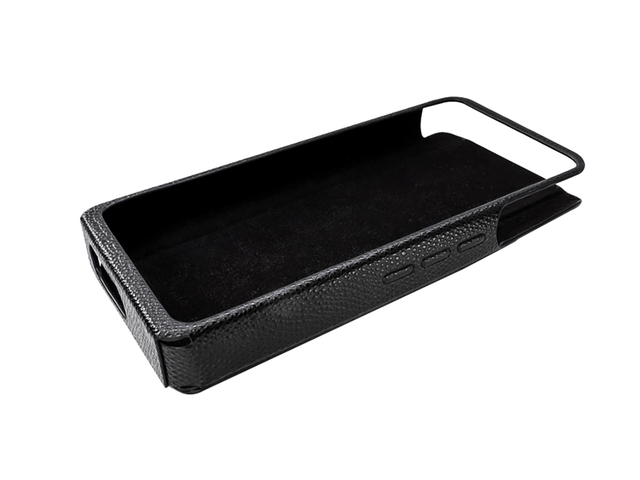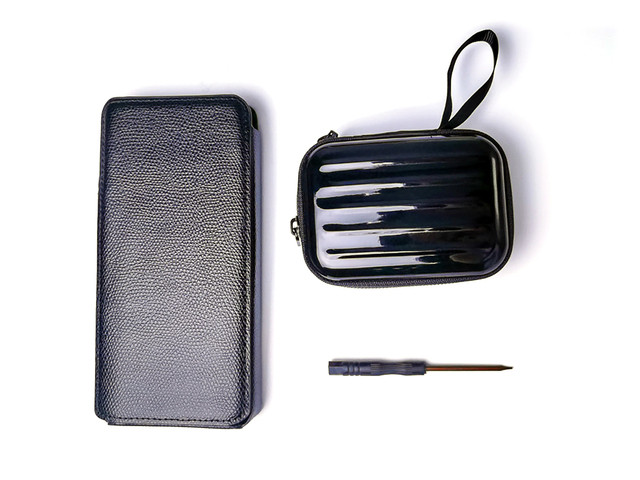The AMP12 was kindly provided by iBasso free of charge but they never asked for a favorable review.
As always this is my honest and subjective evaluation of it.
It is selling for €229 and you can get from
here
All links provided in this article are not affiliated in any way.
Introduction
The iBasso DX300 is a flagship 6.5" player featuring Quad CS43198 DAC chips, a powerful Snapdragon 660 processor, Dual battery power supply and interchangeable AMP cards.
Full specifications are available
here and you can read the full review
here
What is an amp card?
An amp card is essentially an interchangeable amplifier stage in a module form that is easily swapped by the user without the need of specialized knowledge.
It is not something new and iBasso have already used it in their previous flagship player the DX220 although the two types of cards are different and not compatible the one with the other.
Such amp card designs are not exclusive to iBasso since a few other companies, like FiiO do use them in their players and portable DACs.
The amp card is a very clever design because users can tailor the sound according to their needs and headphones used.
For example you can use a low gain card with minimal noise floor for your sensitive earphones or a high powered one for full sized headphones and it is not only about gain since you can find even vacuum tube amplifier cards.
The DX300 amp modules
The DX300 comes with the AMP11MKII card pre-installed and this is the second version of it.
First batches of the player, like our one, featured the AMP11 card but due to some electronic components shortage it was updated to the MKII version with a few differences between the two of them, mainly the power transistors if we are not mistaken.
The AMP11MKII card is a discrete circuit and is equiped with dual balanced headphone outputs (4.4mm and a 2.5mm) plus a single ended 3.5mm one that can also be configured as a line out.
The maximum voltage output is 7.1Vrms and the power is quite high for a DAP reaching 1240mW at 32ohm load.
AMP12 Technical specifications
The AMP12 brings a fully discrete balanced circuitry to the DX300 both in current and voltage stages with a class A bias rather the conventional AB one.
Quiescent current is run very efficiently in order to prevent serious battery drain and furthermore the amp benefits from the dedicated power supply to offer high power output with low noise floor and extra headroom.
Measurements are pretty impressive since we get a whole 8.3Vrms with THD+N: -113dB(No Load), -112dB(300 ohm load), -107dB(32 ohm load , Dynamic range: 126dB, Signal to noise ratio: 126dB and Crosstalk: -115dB.
Furthermore this time is included a true dedicated balanced line output by the means of a 4.4mm pentacon jack with a full scale 4.1Vrms output.
The signal is variable and we need to set gain to high and raise the volume to maximum in order to get the full voltage.
Since the AMP12 has a dedicated line out the drop down menu loses the option to configure the outputs between phone or line something that makes sense only when using the AMP11MKII.
Physical specifications and installation
The AMP12 is exactly the same size as the AMP11MKII so it fits perfectly in place without extending outside the main body of the player.
There are two gold plated 4.4mm pentacon jacks, one for the phone out and the the other one for the line output.
They sit close together and the labeling is not very clear so it is easy to accidentally use the one instead of the other.
A 2.5mm jack should have been included since there are a lot of people out there with such cables and they have now to use an adapter.
Swapping the cards is an easy task as the only thing we have to do - after powering off the player - is to unscrew the two screws with the supplied Torx screwdriver.
Then we gently pull out the old card, carefully not to touch the electronics and after that we slide inside the new one putting the screws back in place.
Accessories
Except for the screwdriver the package includes some spare screws, a hard carrying case for the AMP module and a nice leather case for the player itself which is of better quality and fit than the original one.
Of course the AMP module and the included case are available in black and blue to match the color of the DX300.
Listening impressions
In order to evaluate the AMP12 we have used both earphones and headphones like the FiiO FH5S , the Sennheiser IE900 , the Focal Clear Mg, the Meze Empyrean and various other models.
We have also tested the line output connected to the iFi ZEN CAN, our reference mid price headphone amplifier.
We don't own super sensitive iems but with all the others we have tested the internal noise floor was non audible.
Battery consumption is barely the same as with the AMP11 and we didn't noticed any significant difference in battery duration.
We didn't perform though any dedicated test to figure out the exact numbers.
Let's start by reminding that the DX300 with the original AMP11 module is one of the best TOTL digital players on the market.
Musical and organic sounding with great analogue timbre, full bodied and holographic, clear, detailed without being artificially analytical, balanced with a flat frequency response, dynamically contrasted and deprived of digital artifacts there is no way not to love it.
Power output is satisfying and enough for efficient full sized headphones except some inefficient planars like the Sundara which still gets loud but lacks in control.
Listening with the AMP12, honestly don't except to experience a jaw dropping difference since the two amps share quite a lot similar sound characteristics.
Let's not forget that the digital section is still the same so the overall sound signature remains unaffected.
Swapping back and forth between the two, we start to realize that the AMP12 is better thanks for some small but clearly distinguishable inherent advantages that establish a firm impression that doesn't fade away with time.
It is like using the same DAC with two different amplifiers, the best and the better one.
The first thing to notice is how easily the music flows through the headphones, an unrestrained movement of sound waves that travel without encountering any further resistance, no added friction.
It is got nothing to do with power because the effect is present even with the most sensitive iems.
Something like having the water flowing under pressure through a certain tube and then suddenly switching to a wider gauge.
Speaking of power, that extra 1.2Vrms do add greater authority and driver control especially with high Z loads like the Sennheiser HD650 which never sounded so good from a portable player.
We constantly needed to lower the volume a few steps in order to reach the same loudness levels as with the AMP11 and we never run out of headroom.
The three gain settings help to accommodate with various loads and always have a good range of volume adjustment.
Sound is definitely more dynamically contrasted offering far better convincing orchestral swings with greater rise and fall times.
The bass is not necessarily fuller but it hits harder, sounds better defined and controlled with extra separation and clarity compared to the AMP11 which in contrast is more bloomy, loose and foggy but warmer in the overall sense.
Both modules exhibit the same linearity without accentuating any part of the frequency band.
There is a difference in transient speed and undoubtedly the AMP12 is faster but thankfully without rushed decay, although some people might prefer the more lazy and laid back decaying of the AMP11.
While the AMP12 is by no means bright or treble forward the AMP11 can be perceived as smoother and more relaxed due to the overall slower speed and the slightly warmer sound signature.
Noise floor is lower on the AMP12 which has a blacker background so it feels more clear and transparent with better detail retrieval but it never becomes overly analytical.
As a whole texture is of higher quality and the notes are presented with finer articulation while the AMP12 retains all the great musical and analogue timbre of the player.
The enhanced clarity helps a lot with positioning so instrumentalists and performers occupy better defined, three dimensional places.
Soundstage is larger and widely extended with added depth but not artificially stretched.
A great holographic soundscape that breathes fresh air and sounds very lively with a natural reverb and realism to it.
Balanced line output
Hugely transparent and full sounding, the balanced line output passes with immense clarity and precision all the excellent sound characteristics of the player to an external amplifier.
The standard 3.5mm line output is good but with the new AMP12 dedicated line, the DX300 DAC portion easily competes with stand alone units and can be successfully used with quality headphone and integrated speaker amplifiers or even powered speakers.
And in our opinion, this is the main feature and innovation of the AMP12 card as it takes the line output performance to a whole new level and adds some extra value to the already perfect DX300.
A portable player that can now act as a high quality stand alone DAC, we do see most users completely satisfied with the performance and not feeling the urge to upgrade to something else.
At the end
The DX300 from iBasso is as good as it gets with the included AMP11 (or MKII) and it is not necessary to buy the AMP12 in order to enjoy it.
But if you want to squeeze every last drop of performance and experience high quality class A headphone amplification and/or you need the best dedicated balanced line output then you should definitely try the AMP12.
It will transform your player into a reference sounding machine with ultimate technicalities without sacrificing a bit of the excellent analogue and organic timbre.
For a more forgiving and somewhat laid back sound you should probably stick with the stock module but in all other cases you just can't beat the AMP12 which easily earns our highest recommendation.
Test playlist
Copyright - Laskis Petros 2021




























Edit: Seems as though Head-Fi mods agree with me, as though this photo is the thumbnail on the front-page